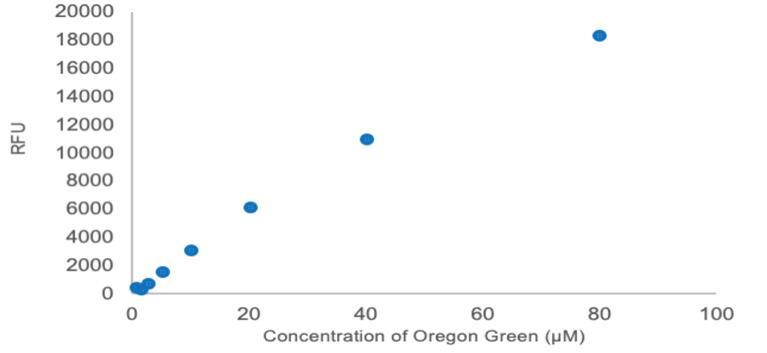
3 minute read
The Influence of Dark Tetrad Personality Traits on Cyberbullying Behavior
Katelyn Hark
Faculty Sponsor Gayle T Dow, PhD
Christopher Newport University
Abstract
PANDEMIC 2020: With the suddenly thrust into the world of online education, bullying behavior has not stopped. Victims now find bullies in their in their digital classrooms, at their graduations, in their private homes, in their living rooms, in their bedrooms. While educators acknowledge this is a growing problem, there is little research into the causes and motivations of cyberbullying. Malevolent personality factors, such as the Dark Tetrad, which includes narcissism, psychopathy, Machiavellism, and sadism, could be one cause of cyberbullying. The purpose of this study was to investigate the relationship among the Dark Tetrad, cyberbullying behavior, and victimization. Two hundred twenty-seven participants completed assessments on Paulhus’ (2002) Dark Triad, DelRay (2015) European Cyberbullying Intervention Project Questionnaire. A univariate analysis of variance (ANOVA) indicated the findings were significant be F(1,205)= 4.25, np2= 0.02, power=0.53, p=.044. Sadists perpetrated cyberbullying than all others. It is believed this is due to their not only their lack of empathy but their enjoyment in hurting others. Implications and limitations will be discussed.
Introduction
The Dark Tetrad is comprised of four personality traits: Machiavellianism, narcissism, psychopathy, and sadism (Brown, Hartay, & Palasinski, 2019). These traits are characterized by their lack of empathy and are considered “socially aversive” personality traits (Pahaulus & Williams, 2002). This lack of empathy experienced allows individuals to manipulate others or cause pain with little regard towards their victim.
Cyberbullying is considered a form of bullying that uses unwanted repetitive, intentional, and harmful behaviors online towards another person (Patchin & Hinduja, 2015). Cyberbullying ranges from hate speech, intimidation and threats to hacking and identify theft. Cyberbullying occurs at all ages, but given the limited coping mechanism of youth, it can be particularly harmful to teens and young adults. While safeguards can be put in place to limit the prevalence of cyberbullying, there is little research on the motivations of a cyberbully to engage in harmful behavior.

Sadism
Enjoying the pain and humiliation of others.
Psychopathy
Lack of empathy, remorse, and experiences no fear of consequences.
Machiavellianism
Deceiving and exploiting others for personal gain.
Narcissism
Having a sense of entitlement and disregard for others.
Methodology
Participants in this study were recruited from a small liberal arts school in the United States through an online research portal. A total of 226 participants (42 men and 184 women) were included in the sample. Participants completed Paulhus’ (2002) 27-item Dark Triad assessment which consisted of statements describing different thoughts or behaviors that are associated with the dark triad personalities, such as “Whatever it takes, you must get the important people on your side”, “I know that I am special because everyone keeps telling me so”, and “Payback needs to be quick and nasty.” In order to measure sadism, participants took O’Meara’s 10-item Short Sadistic Impulse Scale assessment, which also consisted of statements describing different thoughts or behaviors, such as “I have hurt people because I could.” These two assessments were measured using a 5 point Likert-type scale with the options of strongly agree, agree, neutral, disagree, and strongly disagree. Cyberbullying behavior was measured using DelRay’s (2015) European Cyberbullying Intervention Project Questionnaire, which measured both cyberbullying perpetration and victimization behaviors, such as “Someone posted embarrassing videos or pictures of me online” and “I said nasty things about someone to other people either online or through text messages.” This questionnaire was measured using a 5 point Likert-type scale that measured the number of instances this behavior occurred, with the options of never, once or twice, once a month, once a week, and more times a week.
Results and Implications
It was hypothesized that higher levels of Machiavellianism, psychopathy, and sadism would indicate higher levels of cyberbullying behavior, while narcissism would not indicate higher levels of cyberbullying behavior. Results found that only higher levels of sadistic behavior was significant and was associated with higher levels of cyberbullying behavior F(1,205)= 4.25, , np2 = 0.02, power=0.53, p=.044. This finding could be explained that sadists find enjoyment out of hurting others much more than Machiavellians, narcissists, and psychopaths. Cyberbullying may allow perpetrators to hurt someone anonymously without having to do it face-to-face, making it easier for them to inflict pain and avoid consequences. With the rise of online communication, it is important to understand the motivations behind cyberbullying, especially in young adults and adults.
This research can explain that someone’s personality is the reasoning behind engaging in cyberbullying. These findings can help the schools, universities, and work places in implementing new guidelines or procedures in order to combat cyberbullying. These can also assist future research in determining the progression of cyberbullying from childhood, and what personality traits are more likely to continue this behavior into adulthood.
References
Brown, W. M., Hazraty, S., & Palasinski, M. (2019). Examining the dark tetrad and its links to cyberbullying. Cyberpsychology, Behavior, and Social Networking, 22(8), 552–557.
Paulhus, Delrol L., & Williams, K M. (2002). The Dark Triad of Personality: Narcissism, Machiavellianism, and Psychopathology. Journal of Research in Personality, 36, 556563. Academic Press.
Del Rey, R., Casas, J. A., Ortega-Ruiz, R., Schultze-Krumbholz A., Scheithauer, H., Smith, P., Thompson, F., Barkoukis, V., Tsorbatzoudis, H., Brighi, A., Guarini, A., Pyżalski J., & Plichta, P. (2015). Structural validation and cross-cultural robustness of the European Cyberbullying Intervention Project Questionnaire. Computers in Human Behavior, 50, 141–147.

O'Meara, A., Davies, J., & Hammond, S. (2011). The psychometric properties and utility of the Short Sadistic Impulse Scale (SSIS). Psychological Assessment, 23(2), 523–531.
Patchin, J.W., & Hunduja, S. (2015). Measuring Cyberbullying: Implications for Research. Aggression and Violent Behavior 23, 69-74.
Picture 1 (top): https://www.health.harvard.edu/preventing-cyberbullying
Picture 2 (middle): https://turbofuture.com/internet/Cyberbullying-and-Social-Media
Picture 3 (bottom): https://www.cybersmile.org/advice-help/category/advice-for-adults








